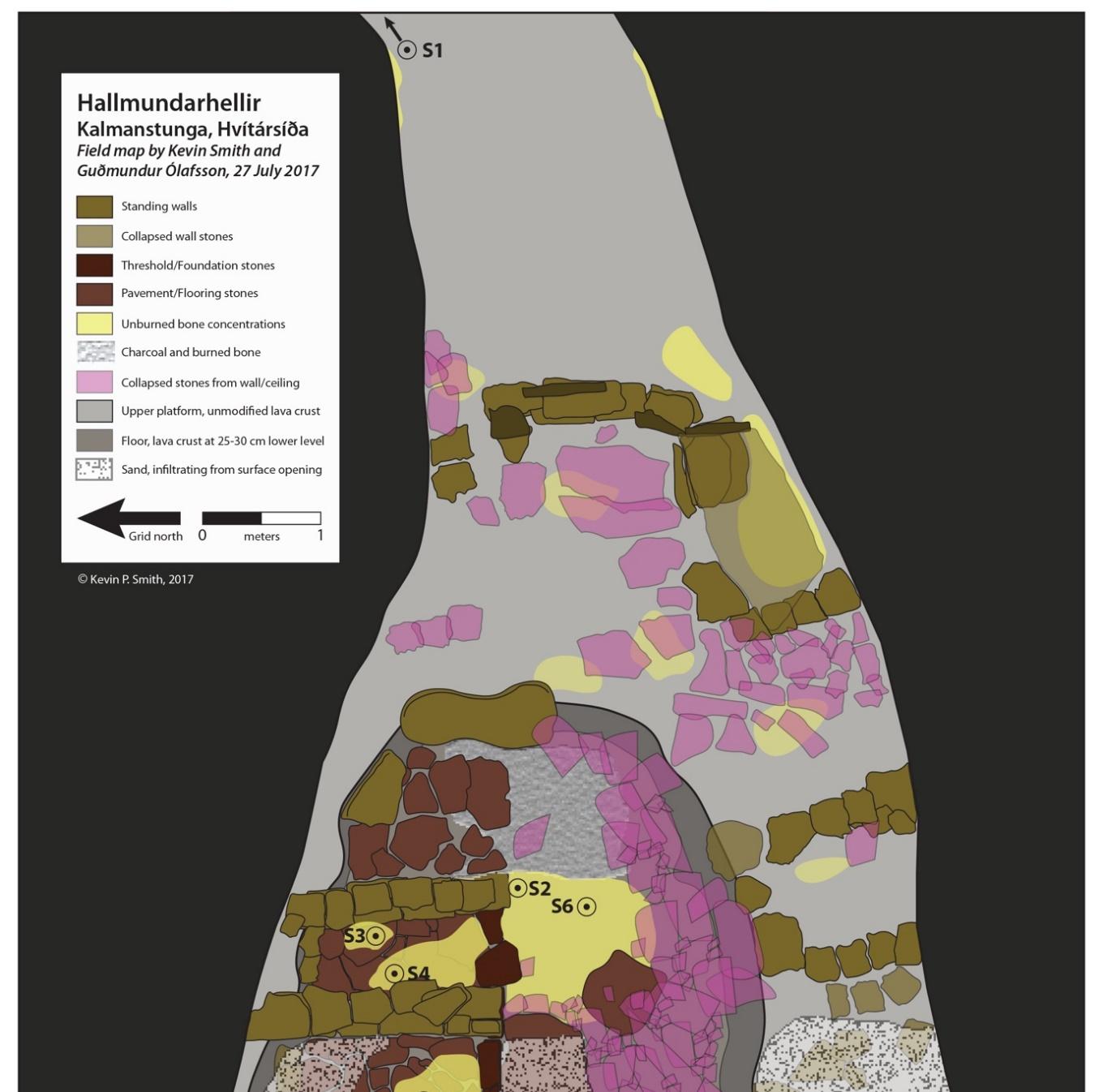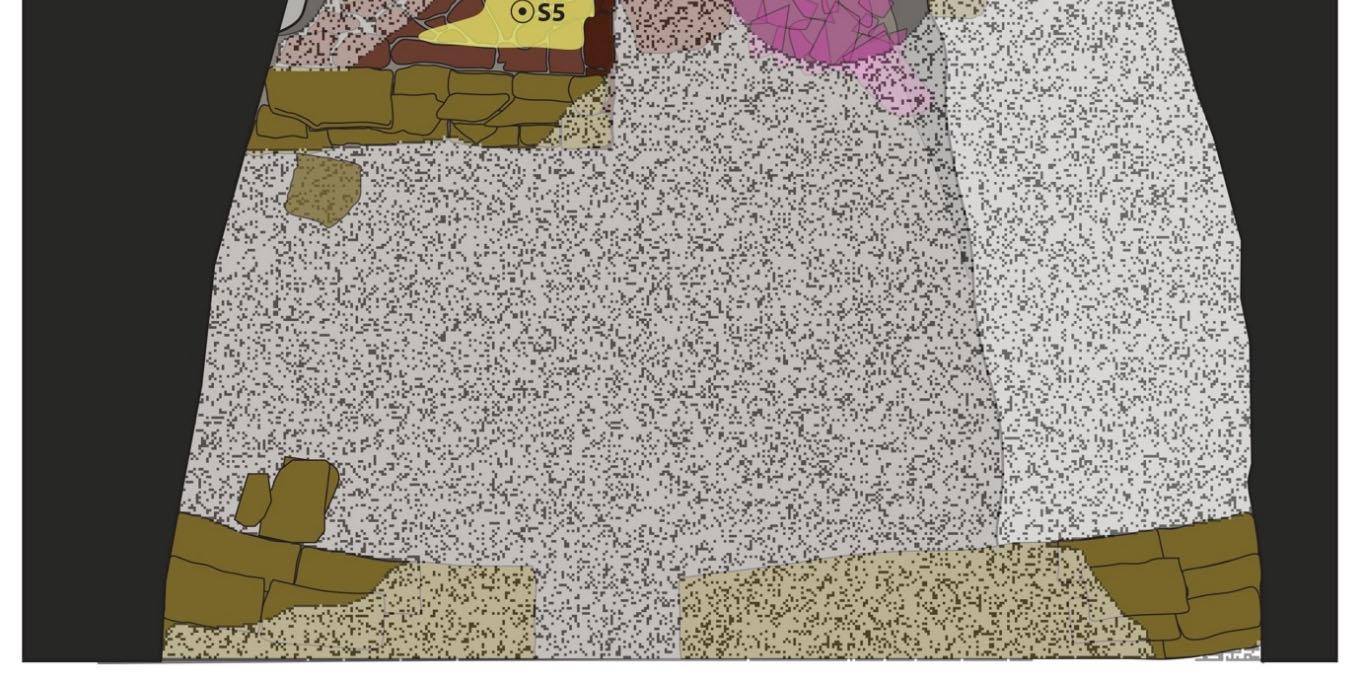
2 minute read
the locations of faunal samples marked in. ©Kevin P. Smith 2019

Figure 1: Hallmundarhellir, following 2017 mapping by Kevin Smith and Guðmundur Ólafsson, with the locations of faunal samples marked in. ©Kevin P. Smith 2019
Analysis methods
Zooarchaeological analysis of the bones and teeth from Hallmundarhellir took place in the Icelandic ZooArch laboratory at the Agricultural University of Iceland in Keldnaholt, Reykjavík on August 9th to 11th 2017 and was done by zooarchaeologist Albína Hulda Pálsdóttir. The Icelandic ZooArch reference
collection was used for identification (Pálsdóttir & Skúladóttir, 2016).
Basic data was recorded through the NABO Zooarchaeology working group’s NABONE system (9th edition) which combines an Access database with specialized Excel spreadsheets. The NABONE
package allows application of multiple measures of abundance, taphonomic indicators, and skeletal
element distribution (North Atlantic Biocultural Organization Zooarchaeology Working Group, 2010).


Figure 2: Dog skeleton with major bone elements labeled (Davis, 1987, p. 54; Reitz & Wing, 2008, p. 364).
All teeth and bones were identified to species and element (Figure 2), when possible, and basic
taphonomic indicators were recorded. The bones’ texture was recorded following the York system
(Harland, Barrett, Carrott, Dobney, & Jaques, 2003) to get an overview of the general state of
preservation of the collection. All bones and teeth were photographed from multiple angles. Zones
were recorded following the standards of Dobney & Rielly (1988).
Land mammal element measurements were done according to the metrical standards of von
den Dreisch (1976), recorded to the millimeter level using digital callipers, with additional
measurements taken that are specific to sheep (Ovis aries) bones (Mallett & Guadelli, 2013; Popkin,
Baker, Worley, Payne, & Hammon, 2012).
Bones from sheep (Ovis aries) and goat (Capra hircus) are often difficult to identify confidently to
species. For distinctions between sheep (Ovis aries) and goat (Capra hircus) bones, the standards of
Zeder & Lapham (2010) were followed with aid from other publications (Boessneck, 1969; Halstead,
Collins, & Isaakidou, 2002; Mallett & Guadelli, 2013).
The majority of the elements recovered from Hallmundarhellir had been put moist into closed
plastic bags in the field which caused some mold growth on the bones in the month that passed from
their recovery to analysis. The elements were handled with gloves and lightly brushed to remove
loose soil and mold and to make sure that all butchery marks and taphonomic indicators could be well
observed. They were allowed to dry slowly and put in bags with holes to prevent further mold growth.









